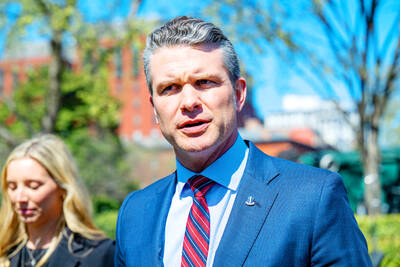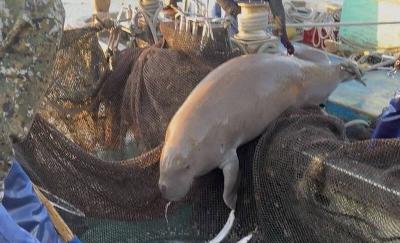Robust infrastructure and a clear regulatory framework are the key elements in the nation’s efforts to develop offshore wind farms, foreign industry representatives said at a forum in Taipei on Wednesday.
Taiwan is moving fast to introduce offshore wind farms, said Martin Skiba, chairman of World Forum Offshore Wind (WFO), the first organization dedicated to fostering the global growth of offshore wind energy and the forum’s organizer.
As the sector is just emerging, there are challenges that need to be addressed, Skiba said.
Typical challenges are the inability to develop robust infrastructure, including reinforcement of onshore grid networks and harbor facilities to better install transmission lines, he said.
The biggest concern about investing in Taiwan is the need for a clear and detailed industry road map, Germany-based Innogy director of offshore investment and asset management Richard Sandford said.
While recognizing that Taiwan has set a goal of generating 5.5 gigawatts of offshore wind energy by 2025, Sandford said the related regulatory framework is not in place.
“You’ve got the target, which is great,” he said, adding that there are no details as yet about bidding on tariffs, for instance, including how often auctions would be held and how much generating capacity is to be auctioned.
“We don’t yet know the details of the rules,” he said. “Having clarity over the regulatory work would be very useful.”
WFO members have set a target of generating more than 500 gigawatts of installed capacity by 2050 worldwide, based on them adding a record total of 5 gigawatts last year.
Skiba said he is not sure what proportion Taiwan would contribute by then, but added that Asia is likely to produce between 300 and 350 gigawatts, making it the biggest market in the sector.
There are no Taiwanese companies directly involved in the WFO yet, but interested local companies in the offshore wind farm supply chain are welcome to join the group, he said.

‘DENIAL DEFENSE’: The US would increase its military presence with uncrewed ships, and submarines, while boosting defense in the Indo-Pacific, a Pete Hegseth memo said The US is reorienting its military strategy to focus primarily on deterring a potential Chinese invasion of Taiwan, a memo signed by US Secretary of Defense Pete Hegseth showed. The memo also called on Taiwan to increase its defense spending. The document, known as the “Interim National Defense Strategic Guidance,” was distributed this month and detailed the national defense plans of US President Donald Trump’s administration, an article in the Washington Post said on Saturday. It outlines how the US can prepare for a potential war with China and defend itself from threats in the “near abroad,” including Greenland and the Panama

A wild live dugong was found in Taiwan for the first time in 88 years, after it was accidentally caught by a fisher’s net on Tuesday in Yilan County’s Fenniaolin (粉鳥林). This is the first sighting of the species in Taiwan since 1937, having already been considered “extinct” in the country and considered as “vulnerable” by the International Union for Conservation of Nature. A fisher surnamed Chen (陳) went to Fenniaolin to collect the fish in his netting, but instead caught a 3m long, 500kg dugong. The fisher released the animal back into the wild, not realizing it was an endangered species at

The High Prosecutors’ Office yesterday withdrew an appeal against the acquittal of a former bank manager 22 years after his death, marking Taiwan’s first instance of prosecutors rendering posthumous justice to a wrongfully convicted defendant. Chu Ching-en (諸慶恩) — formerly a manager at the Taipei branch of BNP Paribas — was in 1999 accused by Weng Mao-chung (翁茂鍾), then-president of Chia Her Industrial Co, of forging a request for a fixed deposit of US$10 million by I-Hwa Industrial Co, a subsidiary of Chia Her, which was used as collateral. Chu was ruled not guilty in the first trial, but was found guilty

DEADLOCK: As the commission is unable to forum a quorum to review license renewal applications, the channel operators are not at fault and can air past their license date The National Communications Commission (NCC) yesterday said that the Public Television Service (PTS) and 36 other television and radio broadcasters could continue airing, despite the commission’s inability to meet a quorum to review their license renewal applications. The licenses of PTS and the other channels are set to expire between this month and June. The National Communications Commission Organization Act (國家通訊傳播委員會組織法) stipulates that the commission must meet the mandated quorum of four to hold a valid meeting. The seven-member commission currently has only three commissioners. “We have informed the channel operators of the progress we have made in reviewing their license renewal applications, and